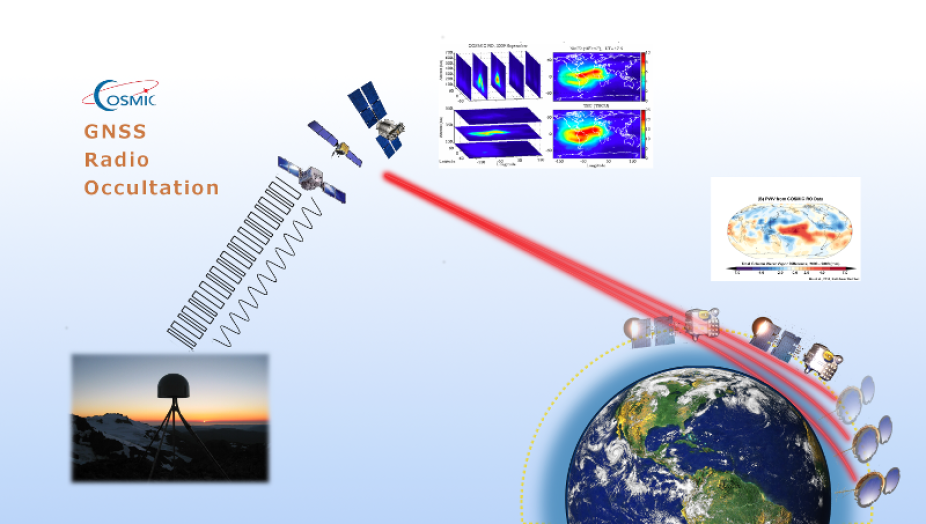Global Navigation Satellite System (GNSS) Background
Many people are familiar with Global Positioning System (GPS) satellites, but GPS is just one of many constellations of navigation satellites that fall under the GNSS umbrella. In addition to the American GPS constellation, Galileo (EU), GLONASS (Russia), BeiDou (China), and QZSS (Japan) also provide precise navigation data for users around the world.
GNSS satellites use a process called trilateration to deliver positioning estimates. Each GNSS satellite carries an atomic clock, enabling constant transmission of its position in space and time. A GNSS receiver uses this information, from at least four GNSS satellites, to compute its position.
In addition to precise positioning, GNSS Satellites are also used for remote sensing. COSMIC is a leader in two GNSS remote sensing techniques: Radio Occultation and Reflectometry.
